
The Revel and HIKE: A Beautiful Collaboration for RVing Adventures
The Revel and HIKE: A Beautiful Collaboration for RVing Adventures
A fun Q&A about how one family is using an off-road Winnebago van to tow a travel trailer.
By: Peter & Kathy Holcombe
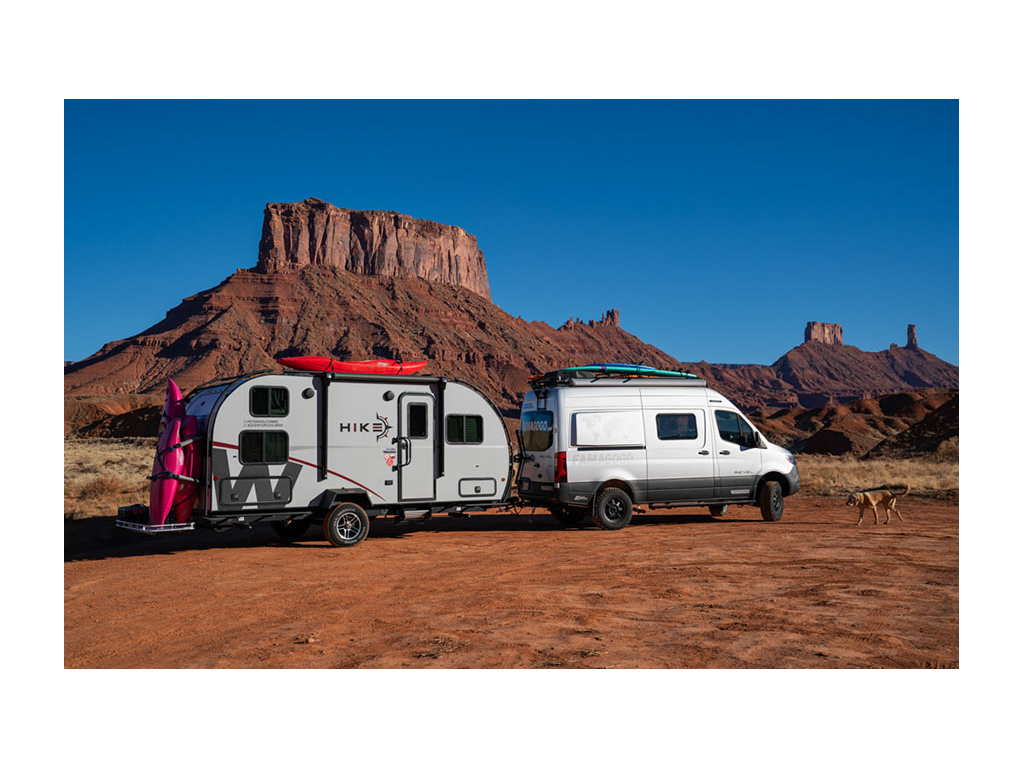
We LOVE our Winnebago Revel! It’s nimble, loves adventure, and is the perfect vehicle for our Around-the-World tour. We have driven it across 20+ countries and have loved every single minute. But we are a family of three (really three and a half if you count our 80-pound yellow lab, Tucker), and while we eagerly minimize our worldly possessions to the bare essentials to fit into the Revel for a great adventure abroad, we struggle in the tight confines of the Revel for everyday living in North America.
This is where the Winnebago HIKE comes into play (we have the H172BH). We wanted more room for living and gear-hauling, and the light-weight HIKE is the perfect tow vehicle companion for the Revel – especially with the addition of a load-stabilizing hitch and other helpful accessories. The HIKE already has an ingenious exoskeleton rack system that spans tongue to tail that is perfect for attaching solar panels, bikes, or most importantly for us … kayaks.
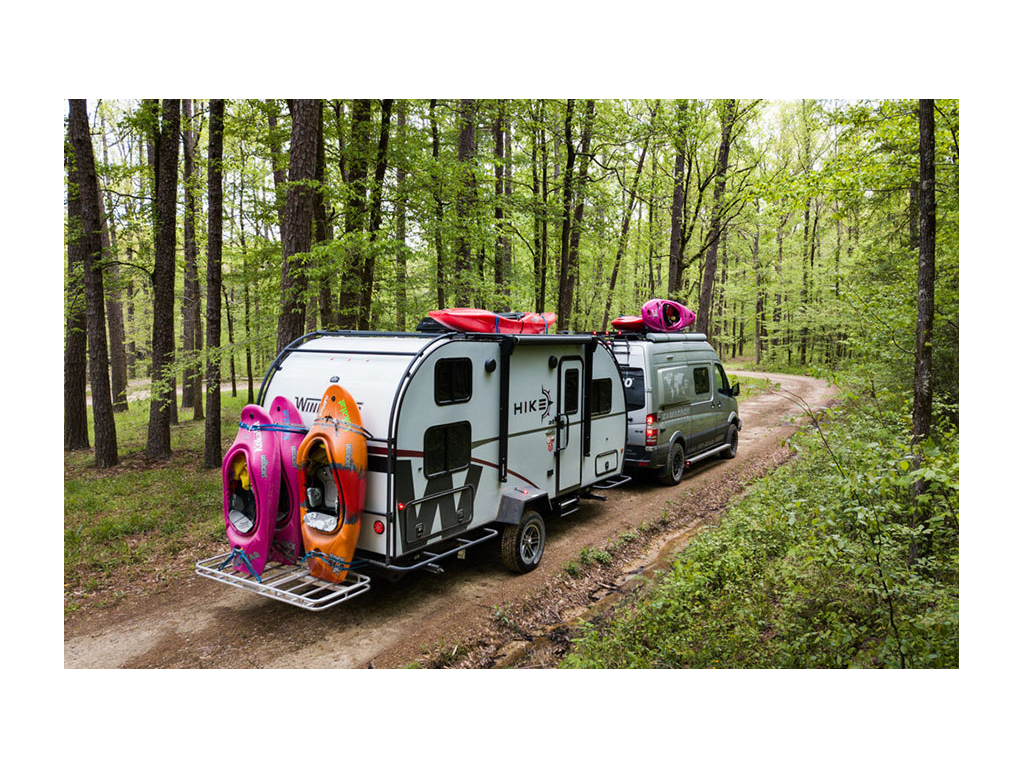
With the off-road capabilities of the HIKE, accessing those wild places is just that much more possible.
In addition, we have added a Pakmule Cargo Carrier on the HIKE’s built-in receiver hitch and we now have a huge amount of rear storage capacity with plenty of bars to secure straps to hold it all on. In fact, with this setup, I can get six additional kayaks on the rear and still have room for six more on the roof of the Revel. (Do I have a kayak problem? Not any more, because they all fit on this great Revel/HIKE combo!)
How the Revel/HIKE Combo Improves Our Travels
We have taken this dynamic duo all over North America. In Columbus, GA, we could unhitch the HIKE in a wonderful private camp right downtown, within walking distance to some of our favorite huge rapids and restaurants, then use the nimble Revel for around-town driving. We loved the urban paddling on the Chattahoochee River!
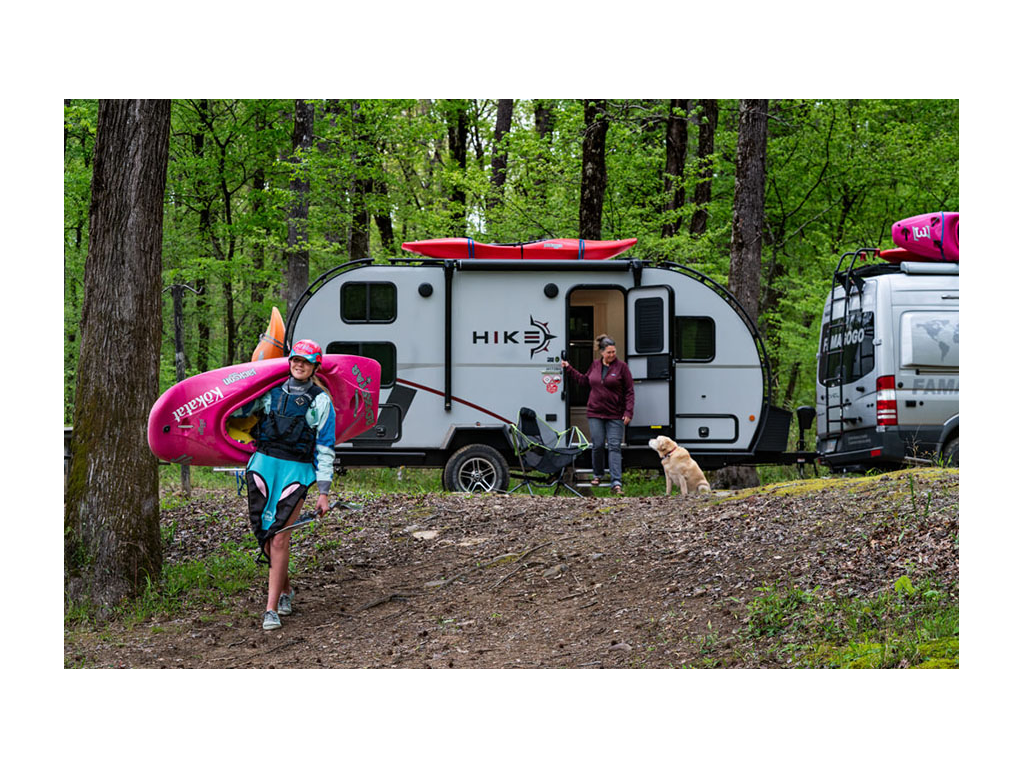
This is why we RV: to spend time in the places we love.
While visiting Death Valley, we could keep the HIKE in tow in the front country, and then set it up as a base camp at a campground to return to after exploring the rugged off-road trails in the backcountry of the Mojave Desert. We love having the ability to push the off-road capability of our Revel on sandy, rocky, and wild trails throughout the park, knowing that our little caboose is waiting for us to return with all the comforts of home - including two big beds, a larger refrigerator, and more water and black tank capacity.
Becoming a two Winnebago family has boosted our comfort and gear hauling capacity, while retaining the rugged off-road capabilities that we love in the Revel. It really is the best of both worlds!

Not only is this a super functional combination of vehicles, it is also quite a show stopping pair. We can’t pull into a gas station or campground without a series of questions from everyone we meet. Here are a few the top questions we hear …
Top Questions About Our Revel/HIKE Combo
Q: Can you sleep in both of those?
A: Yes, we treat the HIKE as a separate room for our daughter: teenagers (and their parents) need their space! But we do use the larger kitchen, fridge, and dinette in the HIKE for family meals and love having an extra bathroom, plus extra water and waste tank capacity is really nice, too.
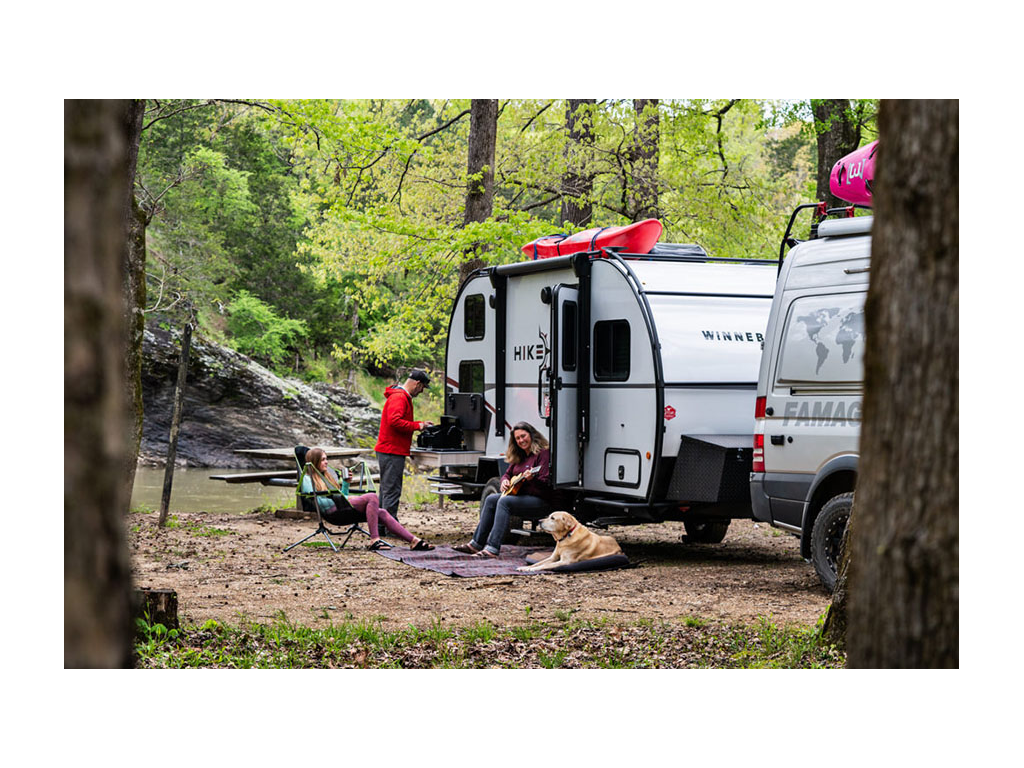
Enjoying the outdoors is not only easy, it is plush with the HIKE’s pull-out outdoor kitchen.
Q: Can a Revel really tow a trailer?
A: Absolutely, YES! A Revel and most all Sprinters can tow 5000 LBS. We have towed with all our sprinter-based Winnebagos (two Views, and two Revels). Sprinters are actually a great tow vehicle, and I have added a few accessories to make towing even better - starting with a load stabilizing hitch. These special hitches take the load from the trailer and distribute it to all four wheels of the tow vehicle.
I also always add a trailer brake controller. In my current Revel, I added the RedArc Pro Elite. It takes about 30 minutes to install and makes a huge difference in braking distance and wear on your tow vehicle's braking system.
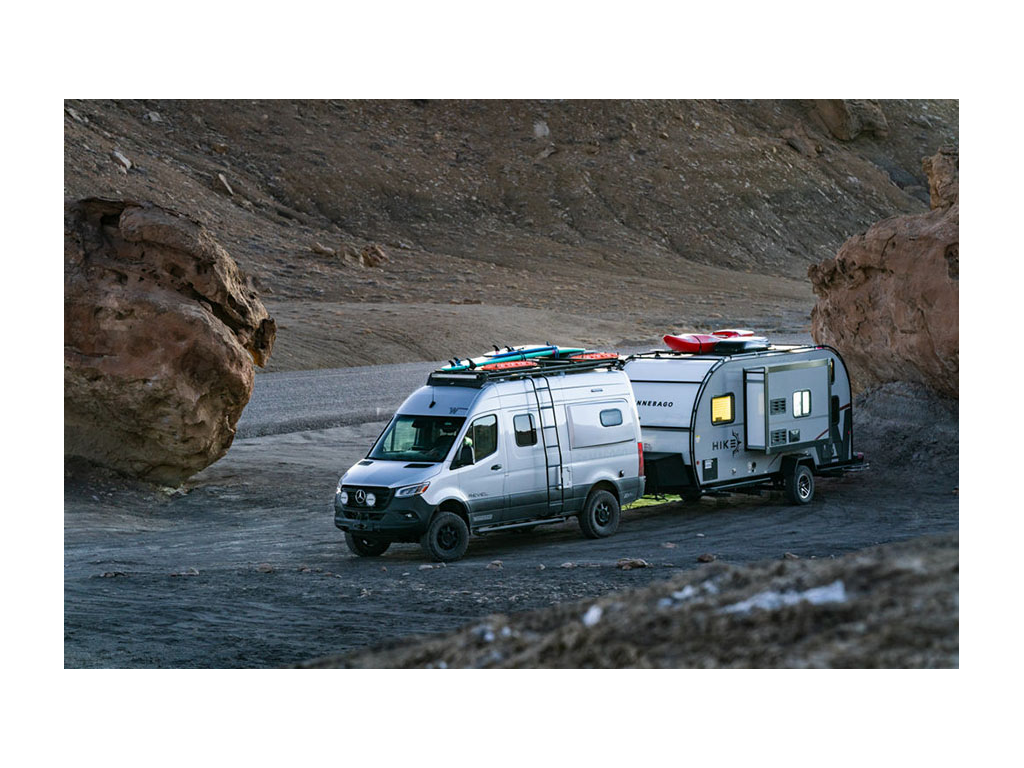
This small adventurous duo allows access to some of the best wild camping to be found anywhere.
Q: What all can you put on that HIKE rack?
A: So much! I added a Zamp 100-watt solar panel and still have room for kayaks. If you just wanted the solar, you could easily get 400++ wats on the roof for the ultimate boondocking trailer.
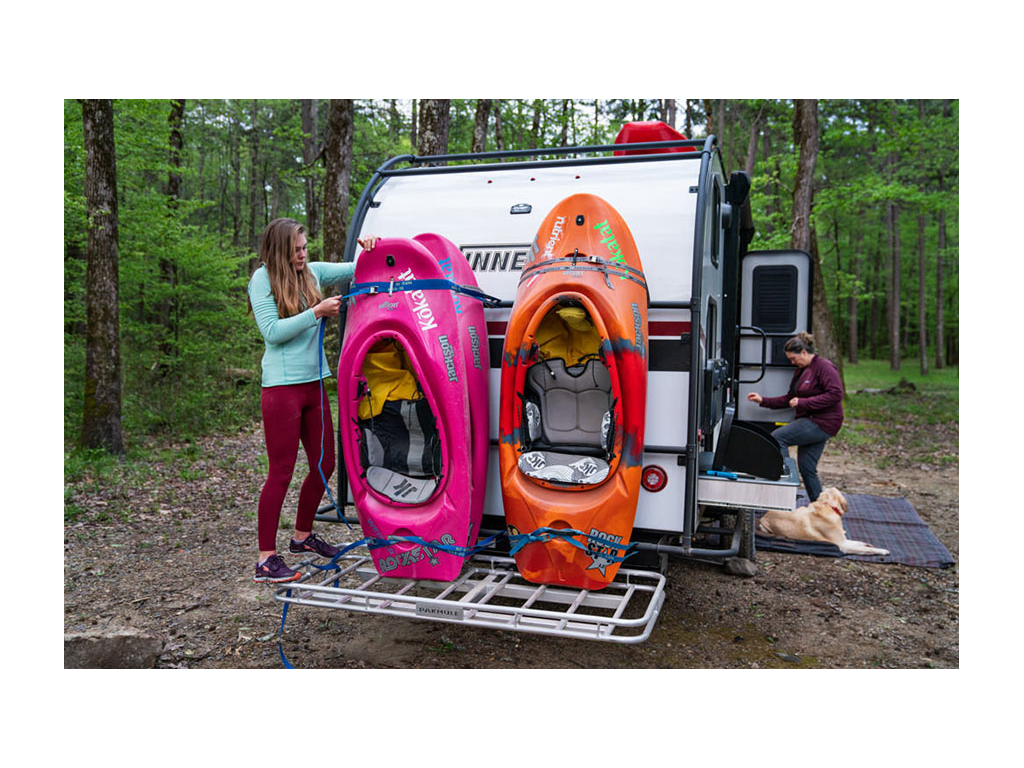
The HIKE outfitted with a PakMule rear hitch rack makes a great lower platform to increase cargo capacity. It's wonderful to allow larger cargo support from below while still using the HIKE’s exoskeleton as secure mounting points.
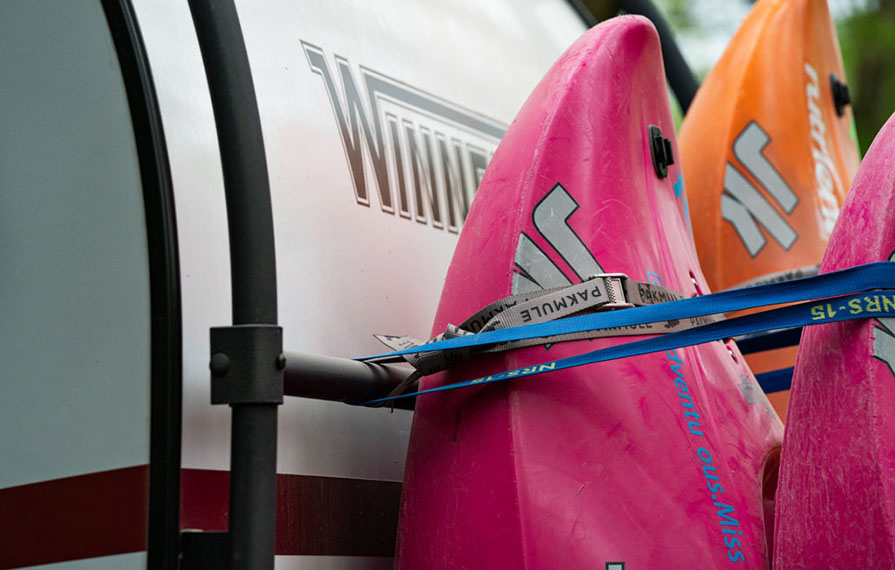
Easy access to essential toys is one of the prime features of the HIKE. The bars are also adjustable to give you maximum freedom to set up your HIKE to serve your needs best. Here Abby Holcombe is unstrapping her kayak for a run down the Ouachita River, AR.
The back of the HIKE is perfect to easily add bikes, skis, smaller kayaks (keep the long ones on the roof), extra black tanks, small generators, and so much more. And adding the Pakmule to the rear hitch creates endless possibilities. We use the original Pakmule and it fits the width of the HIKE really well. You can learn more here.
On the front of the HIKE is a spacious multi-purpose storage box. This holds two standard 20 lb. propane canisters (the swappable kind that you can find at many gas stations and grocery stores) which makes propane refills hassle-free. But there is also plenty of room around the tanks to store cords, riser blocks and chocks, and a water hose. I typically carry my sewer hose in a Rubbermaid container that is strapped to the Pakmule on the rear. It's nice not having to put the black tank hose inside the camper.
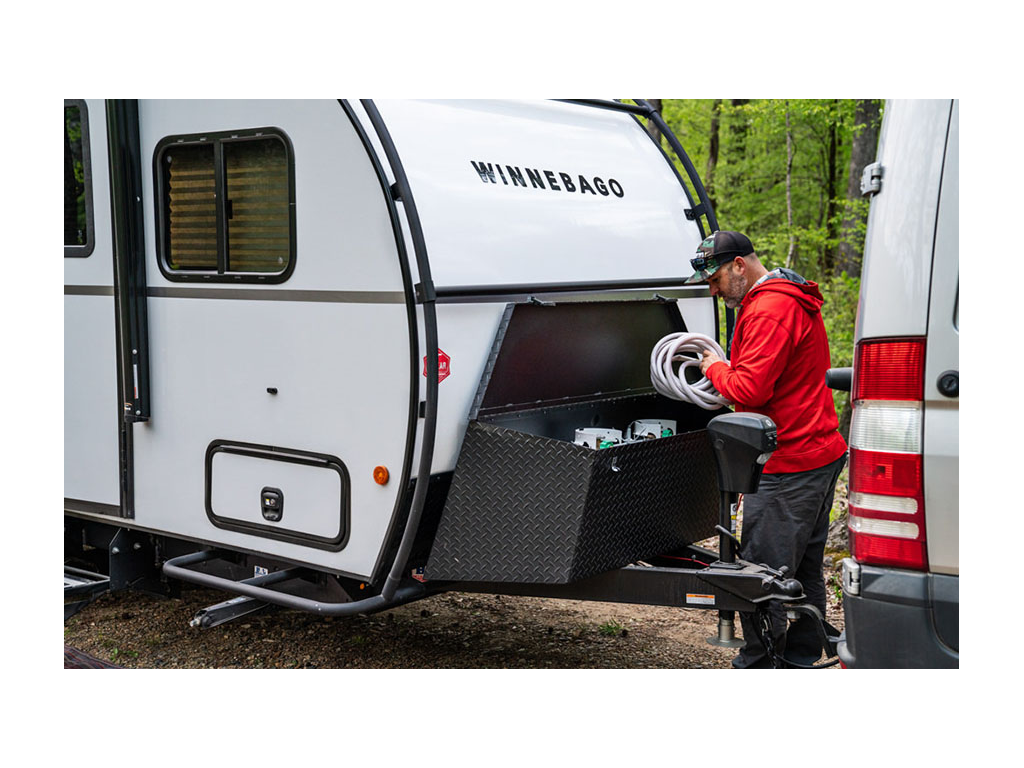
The HIKE’s wonderful tongue box is the perfect place to store all the things that you don’t want to put inside your hatches: water hoses, leveling blocks, or extension cords, as well as the two standard 20 lb. LP tanks.
Q: How's your fuel economy?
A: Did I mention the kayaks yet? With that much stuff on the roof, we have already taken a hit to our miles per gallon. But with the boats on the roof and towing the HIKE, we still get an impressive 12-15 MPG. Considering all the space and capacity of this adventurous duo, this is actually a pretty impressive number and a testament to the German efficiency of the Mercedes Benz Sprinter diesel engine, as well as the HIKE’s low dry weights and tear drop design. I think we could do 2-3 MPG better if we didn't have all the boats on the roof, but where’s the fun in that?!?
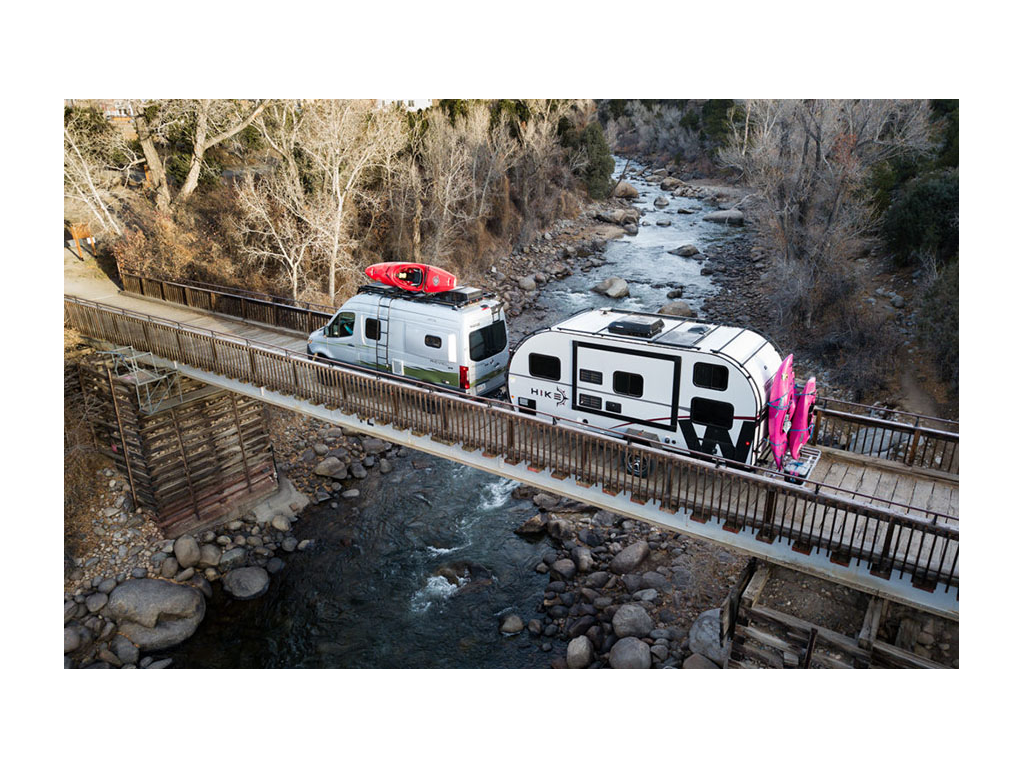
Nimble enough to go where you want, comfortable enough to want to stay there.
Q: Is that an off-road capable trailer?
A: Off-road can mean very different things to different people. But the HIKE has more clearance and bigger wheels that help when driving off the pavement. We love that we can disconnect the HIKE and take our Revel on a solo mission to very rough and adventurous places. This and the extra space are my favorite benefits of towable campers rather than just one larger motorhome. The flexibility is liberating. But we have certainly taken our HIKE down many a dusty dirt road and enjoyed some very scenic boondocking spots.
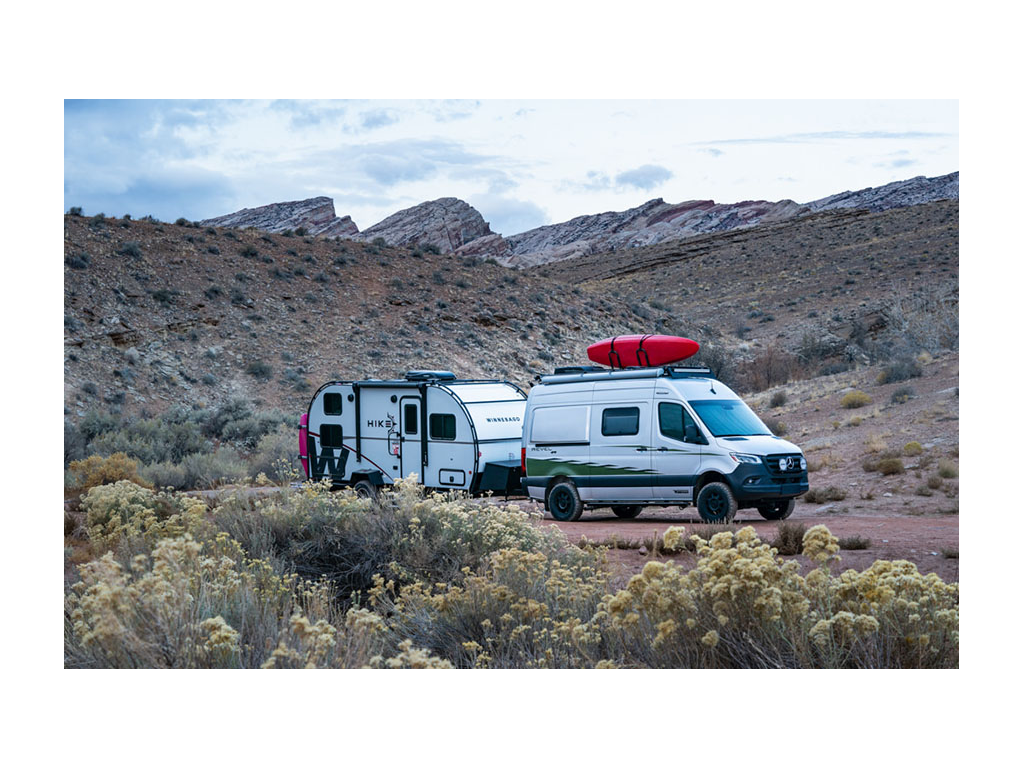
Boondocking has never been so easy in wild Utah.
Q: Do you have to plug the HIKE in?
A: It is certainly nice having it plugged in, but with a few limitations you can definitely enjoy it off the grid. We carry a Honda generator for the times we need AC power for computers and other power-hungry electronics. The HIKE is pre-wired for solar and it makes adding solar panels on the roof pretty easy. This will charge the house battery and keep the fridge, lights, and 12 V outlets running, as long as it’s sunny, depending on your solar and battery capacity.
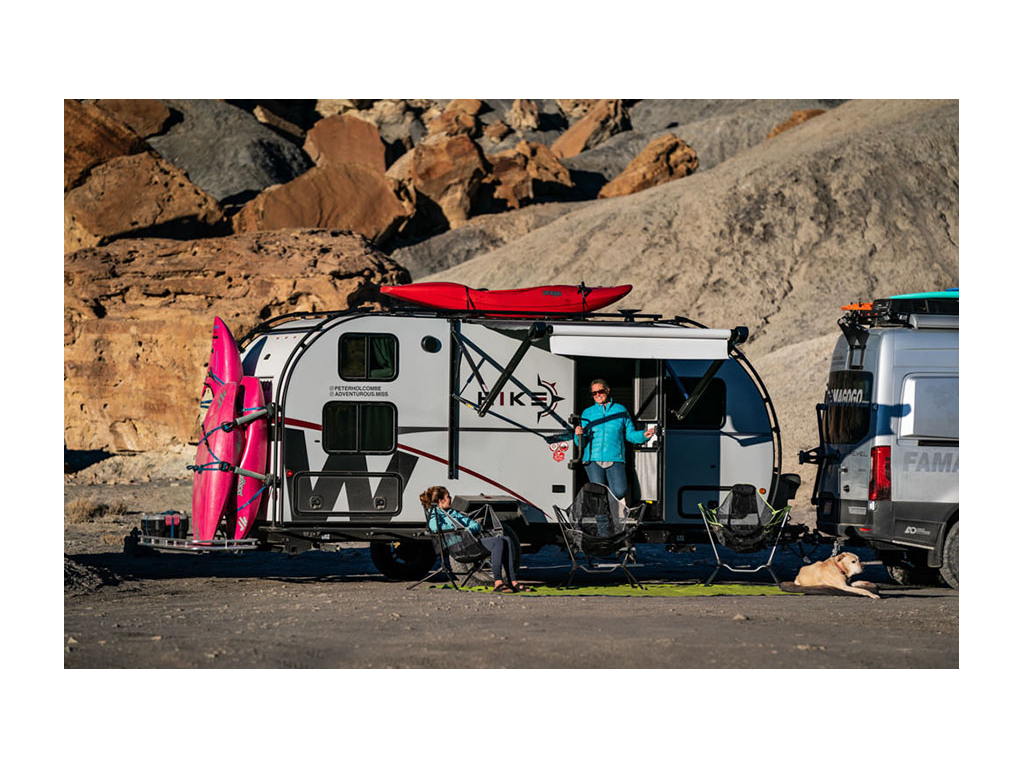
Q: Why so many kayaks?
A: That’s a longer story, best told around the campfire …
Comments
Comments on this post are moderated, so they will not appear instantly. All relevant questions and helpful notes are welcome! If you have a service inquiry or question related to your RV, please reach out to the customer care team directly using the phone numbers or contact form on this page .


